- Optimize Me
- Optimization Approaches
- Random Restart Hill Climbing
- Annealing algorithm
- Genetic Algorithms
- MIMIC
- Finding Dependency Trees
Week 06 tasks:
- Lectures: Randomized Optimization.
- Reading: Chapter 9 of Mitchell, as well as the overview on the No Free Lunch Theorem.

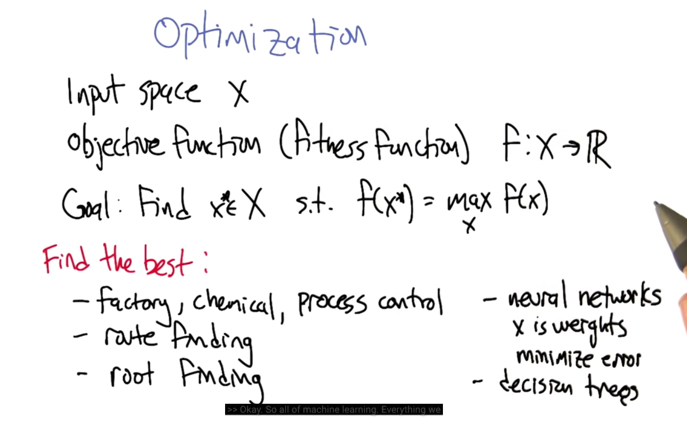
- optimization is to find a x* in input space X to make the objective function has the maximum (or close to maximum).
Optimize Me

- The first question, since the input space is small, we can plot the function and find the largest f(x).
- the second the functions, we can try to use calculus: Set the derivative f(x) to 0 and solve the derivative function ( which will be hard to solve since it’s a cubic function). Alternatively, we can try to plot the data using subgroup of x.
Optimization Approaches

- Three approaches:
- generate & test: when we have a small input space but a complex function
- using calculus: when the function has derivative and the derivative function is solvable when its value is set to 0
- Newton’s method: when the function has derivative and it can be improved iteratively.
- When these approaches does not work, then Randomized Optimization.

- the hill climbing algorithm will stuck at a local maxima.
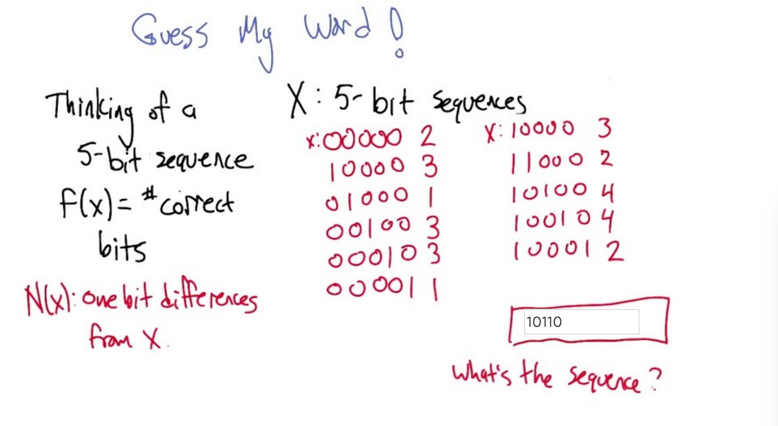
Random Restart Hill Climbing
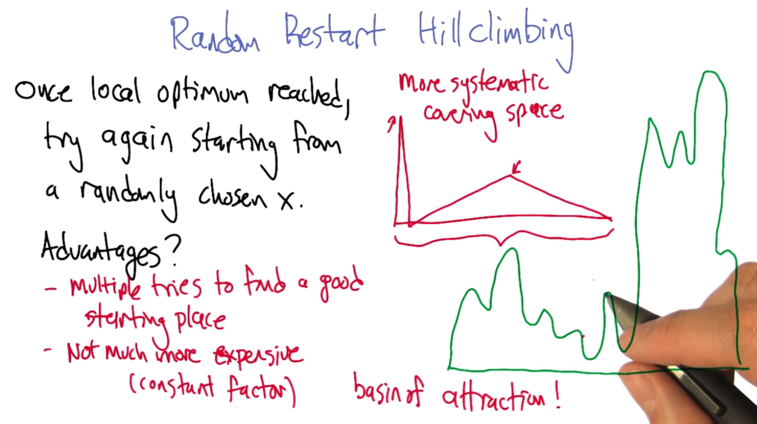
- how to avoid the unlucky starting point?
- checking and make sure the starting point is not visited before
- make sure the starting point is faraway from known local maxima
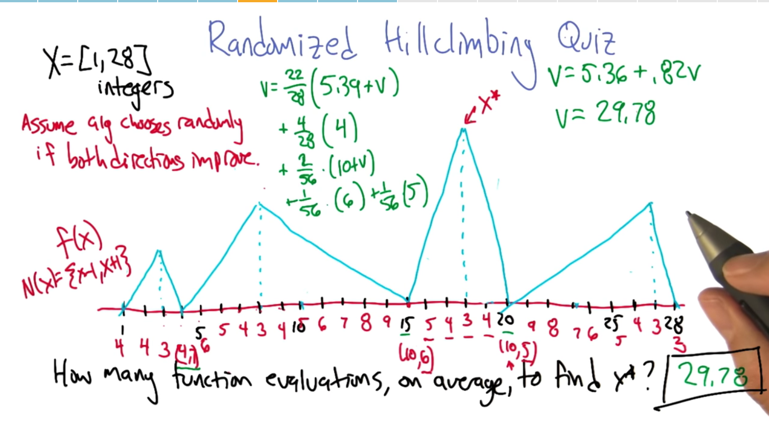
- The six points under the maxima hill are special
- 4 points under the global maxima will take average 4 steps to get to the global maxima. and that’s the 4/28*(4)
- the 2 basin points, half of the time will lead up in global maxima, and half of the time will lead to local maxima (and restart).
- all the other 22 points will lead to local maxima and then start a new round with a randomized starting point.
- if keep track of the points visited, the algorithm might do better than 28 on average.
- if the attraction basin under the local maxima is large, hill climbing will do better.
Annealing algorithm

- One step further than hill climbing: allow downwards to “explore”

- if f(xt) and f(x) is very close, then f(xt) -f(x) is close to 0 and p will be 1.
- If T is really big, say infinity, then f(xt) -f(x) doesn’t matter then. P will be 1, and x will jump to xt
- if T is really small, close to 0, p will climb, not jump.
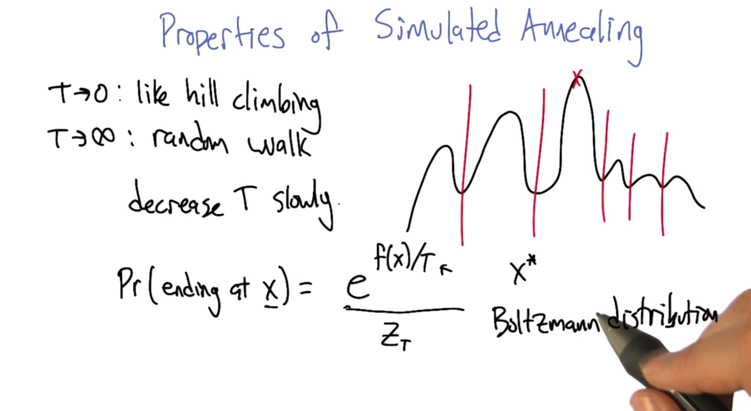
- T -> 0: like hill climbing
- T-> ∞: random walk
- Desearse T slowly: As T decreases, it’s harder and harder to jump over local maxima, and algorithm will reach global maxima
Genetic Algorithms
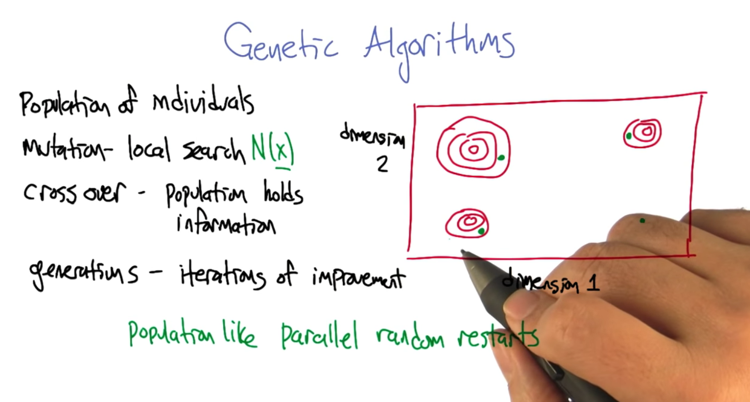
- GA is like random restart but doing the restart in parallel.
- Crossover - population holds information.
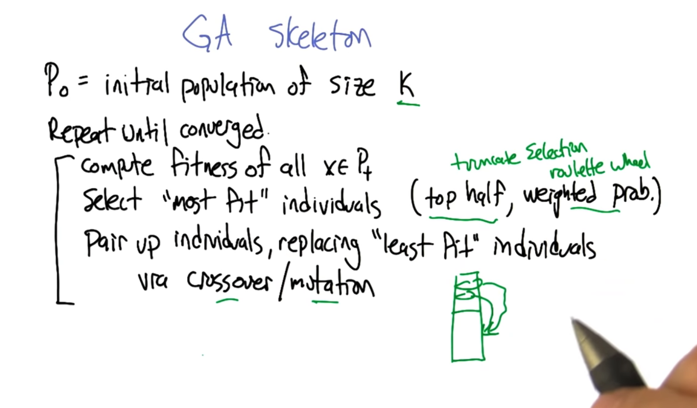
- Define “most fit”
- top half or truncate selection:the half individuals with the largest score
- weighted prob. or roulette wheel: weighted fitness function with probability.
- what’s crossover?

- Uniform crossover: randomization at each position
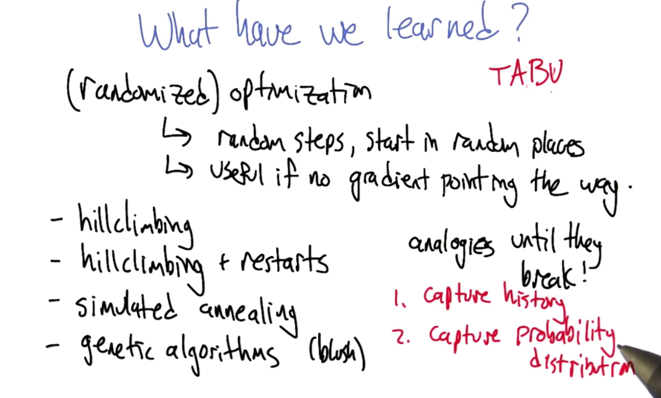
MIMIC

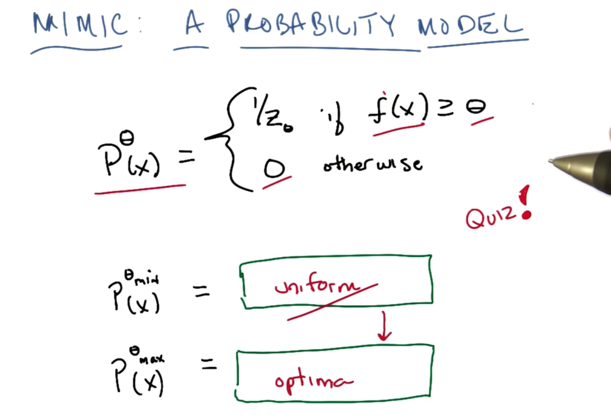
- when θ is min, then P is the uniform distribution of X
- when θ is max, we get the maxima or optima of the distribution
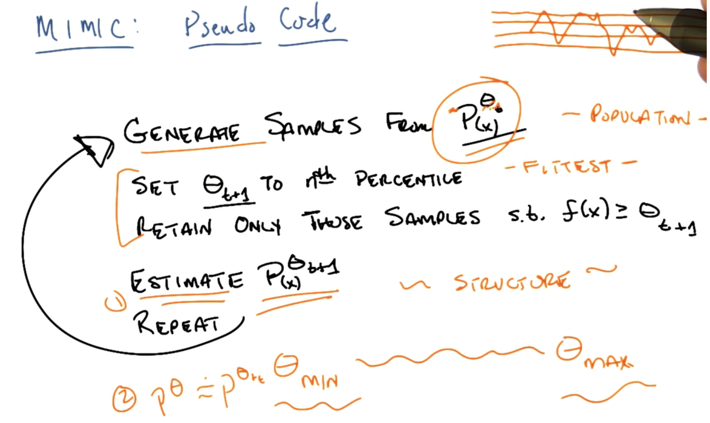
- Given a threshold θt, generate samples from Pθt(x), then set θt+1 to be nth percentage and retain only those samples, s.t. f(x)>=θt_1
- instead of using these samples, we estimate Pθt+1(x), and then generate new samples from it. then repeat the process again and again until converge.
- Two assumptions:
- Pθt(x) is estimable
- Pθt+1 is close enough to Pθt
- this is a lot like Genetic algorithm but Pθ and Pθ+ ϵ can preserve the structure.
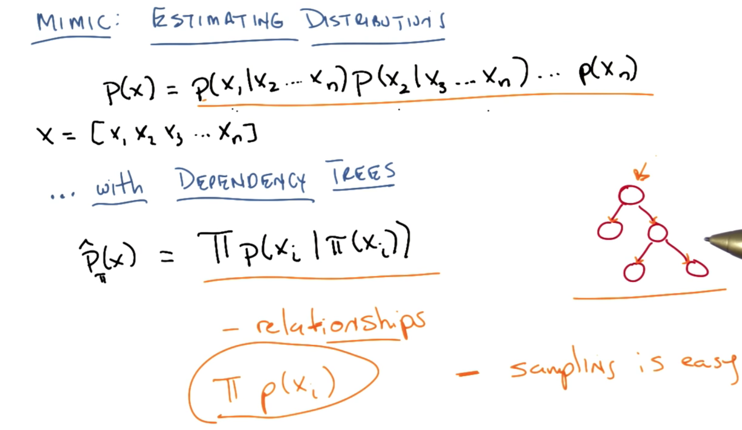
- P(x) is the combination of the p of each x in X=[x1 x2 …. xn] given others in X. To estimate P(x) this way, we will need huge amount of data ( exponential to n).
- Dependent tree: each node only have one parent.
- it can represent relationships
- and sampling dependent tree is easy
- it’s a general form of crossover and it does not require locality.
Finding Dependency Trees
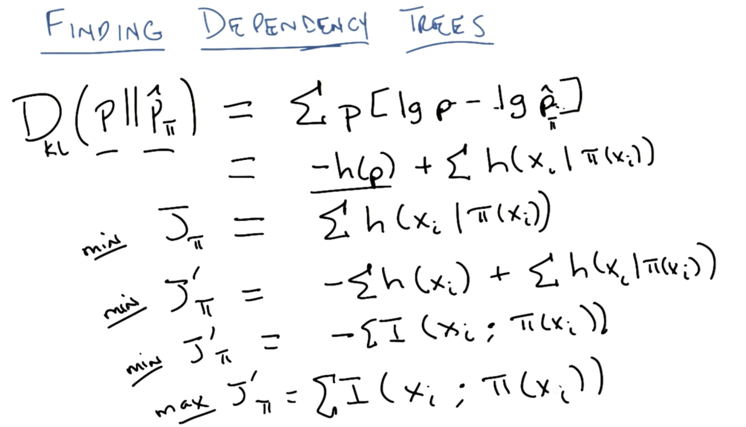
- Minimize Divergence of P and P_hatπ, Divergency can be written as entropy.
- build a cost function by remove -h(p) and add entropy -h(xi), then we get the mutual information between x and π
- Finding Dependency Trees is now converted to a problem to maximize mutual information between x and it’s parent. or in another word, to find the parent who knows the most about the node.
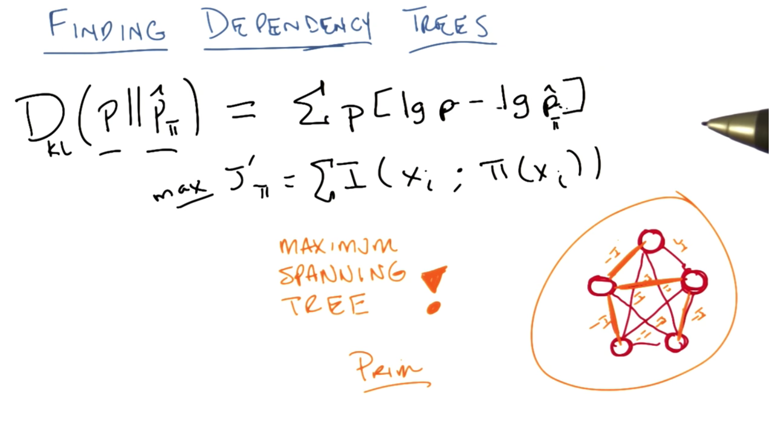
- This can be solved by solving the maximum spanning tree. Using Prim.
- The prim algorithms is fairly fast algorithm ( polynomial to the number of edges of a graph) and it’s good for dense connected graph.
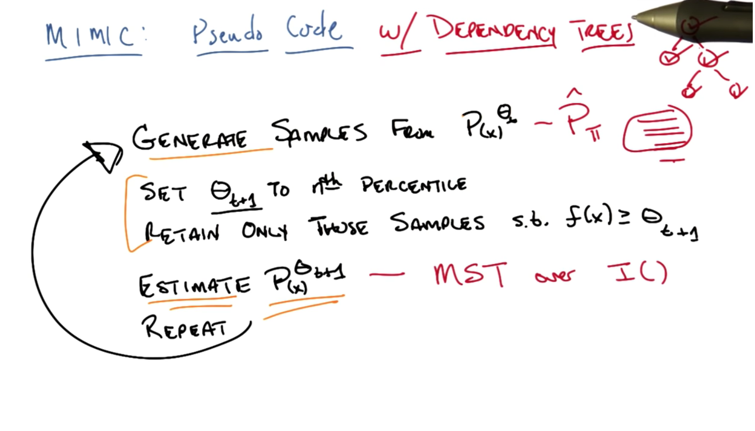
- dependent tree is used to estimate P given the samples from the previous step.
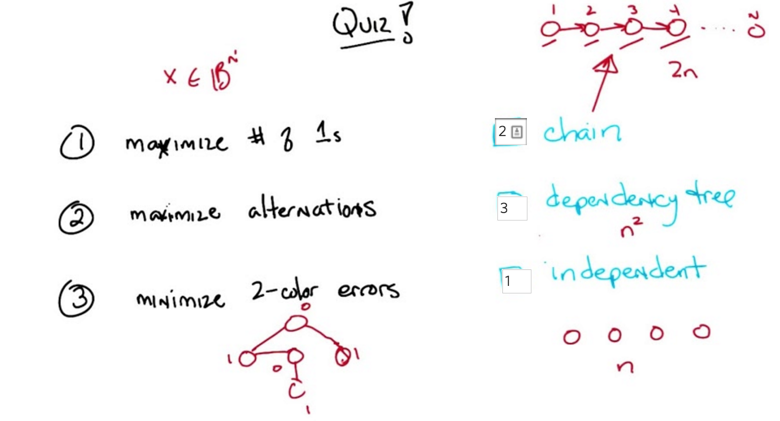
- what distribution can represent the maxima of the problems on left column.
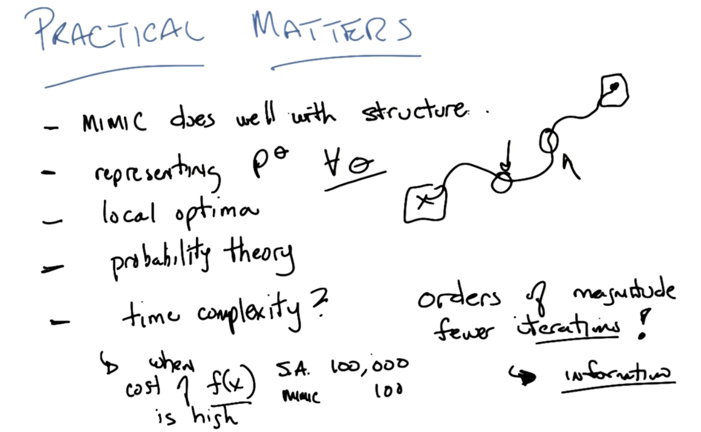
- MIMIC evaluate cost function less when comparing to Simulated Annealing, but it usually takes longer to run.
- MIMIC will get more information in and out
2016-02-17 完成 Genetic Algorithms
2016-02-19 初稿